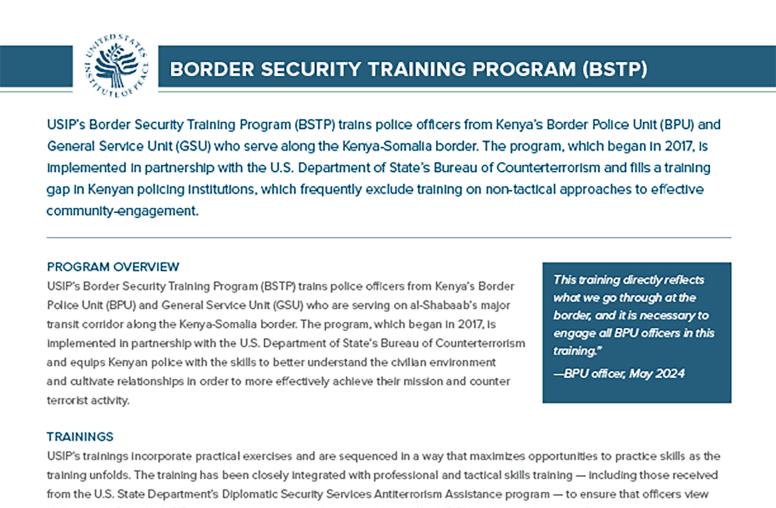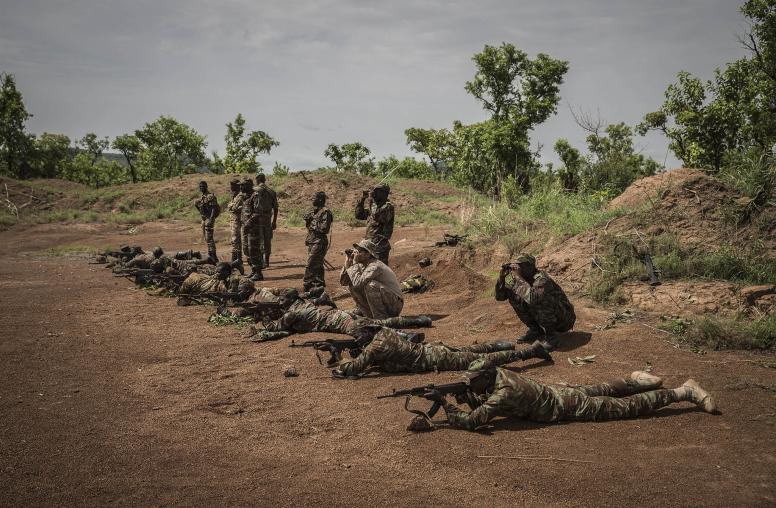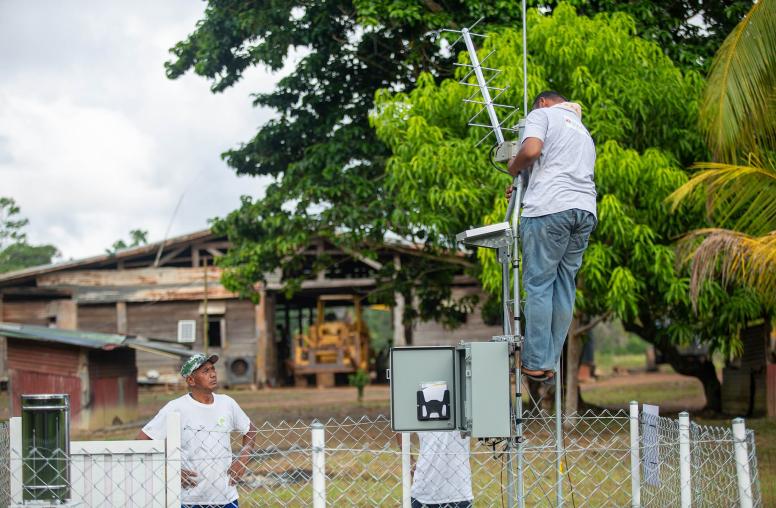Africa’s Sahel Needs a Coordinated Plan on Extremist Violence
As the Sahel region’s turmoil spreads, curbing it requires responding to many overlapping crises.
The African Union held its summit last weekend in the dark shadow of escalating bloodshed amid the violent extremist upheavals of the Sahel region. The surge in violence underscores a need to redouble regional and international efforts to address multiple, simultaneous crises in a holistic and unified manner that goes beyond the security-focused response that has characterized efforts to curb the violence to date.

A Web of Crises
The Sahel stretches across Africa south of the Sahara, touching on roughly a dozen states from Senegal and Mauritania on the Atlantic to Sudan and Eritrea on the Red Sea. Here, a decade of extremist violence has centered in the Liptako-Gourma region (bordering Mali, Niger, Burkina Faso) and around Lake Chad (bordering Nigeria, Niger, Cameroon and Chad). The violence has increased in recent years and has begun spreading south into coastal West Africa.
This crisis of violence fuels — and is fueled by — other crises, including:
- Human displacement. As of December 2022, more than 2.6 million people were uprooted from their homes in Liptako Gourma, and another 2.7 million in the Lake Chad Basin.
- Climate change. In a region where 80 percent of people live directly off of the land, Sahel temperatures are rising faster than the global average, and rainy seasons are shortening.
- Food insecurity. The violence, climate shocks, displacement and effects of COVID-19 have forced 5.1 million people in Burkina Faso, Mali and Niger, and 4 million people in the Lake Chad Basin, into severe food insecurity, sometimes unable to find food for a day or more at a time.
- Democratic backsliding. Extended failures of governments to meet their peoples’ needs has fueled both the violence and a surge of armed coups d’état — seven over 26 months in or around the Sahel — plus a coup attempt in Niger.
- Human rights violations. Between 2019 and early 2021, the United Nations and other organizations documented more than 600 unlawful killings by state security forces, plus forced disappearances and other abuses, as part of the securitized response to extremism.
- Societal tensions. The ongoing violence has ripped apart the social fabric that once held local communities together, with specific groups, such as the Fulani, being scapegoated and stigmatized to deleterious effect.
The Insecurity Challenge
In 2019, a U.S.-led coalition of forces dislodged the Islamic State from its territories in Syria and Iraq and killed its leader, Abubakar al-Baghdadi. Yet the Islamic State was not defeated. Rather, it migrated through its franchises from the Middle East to Africa, where nine “provinces” and/or affiliates of the group operate, often alongside other violent extremist organizations and armed groups on the continent.
Nowhere in Africa does this come together in a more complex cocktail of violent groups than in the Liptako-Gourma region of the Sahel, where the terrorist consortium Jama’at Nasr al-Islam wal Muslimin operates in the same territories as self-defense groups and other armed groups. Many of these groups act as insurgents, blending in with local communities and rendering useless conventional military responses. Such insurgent behavior is enabled by poor governance, inequitable resource management, unaddressed grievances and democratic backsliding — a set of complex conflict circumstances that complicates viable solutions, not only to violent extremism, but also to the concurrent crises that are reinforcing one another in the Sahel.
To date, the responses to violent extremism have been primarily securitized, meaning security forces and law enforcement are used to combat and punish violent extremists. Such military efforts in the Sahel have, at best, failed to curb extremist violence; at worst, they have fueled the very violence they sought to end. When non-security attempts have been made to prevent violent extremism or address the causes that made it more likely to occur, they’ve proven either irrelevant (e.g., attempts to discredit radical Islamic teaching, when Islamic radicalization is not a big driver of violence mobilization in the Sahel) or insufficient (e.g., projects intended to address root causes of violent extremism that are not scaled or not scalable). Despite best efforts, the violence in the Sahel has multiplied and spread over the past decade. For these reasons, it’s not uncommon to hear practitioners and policy makers lament that the responses — security and non-security alike — have been akin to putting a Band-Aid on an arterial bleed.
Potential Ingredients for Success
While there is no ‘silver bullet’ for curbing violent extremism, several ingredients can improve the response in the Sahel. First, alongside the security response must be an equally well-funded response to address the conditions that make it easy for violent extremism to exist and spread. This includes improving people’s access to services such as education, mental and public health, justice and jobs, as well as rebuilding social trust, building local capacity to uphold the rule of law, and advancing a non-negotiable respect for human dignity. Accountability mechanisms to address the impunity with which security forces have inflicted human rights abuses on civilians are also essential.
These ingredients must be put together in a holistic and unified manner that is adaptive, flexible and relevant to local conditions. African governments, the United States, the United Nations (U.N.), African Union (AU), European Union and other organizations have made efforts toward this end. Perhaps the most promising effort to date is a joint AU and U.N. initiative, chaired by Niger’s former president, Mahamadou Issoufou, to shape what U.N. Secretary General Antonio Guterres calls “a new [international community] strategy for the Sahel, because what we are doing now is insufficient. That is, we must recognize our collective failure and find another approach, because this region is going from bad to worse.”
So far, coordinating a unified response has proven challenging and is often derided as impractical. But current efforts can overcome these challenges by learning from humanitarian colleagues who coordinate effective responses to complex humanitarian crises through the U.N.’s cluster system. This system names specific organizations to coordinate among the many working on different parts of a crisis and distributes the burden across the multiple actors responding to the emergency. This well-established practice may offer lessons for building an international response at the scale required for the Sahel region and its overlapping crises.
The Sahel response must also consider how to disincentivize the war economies that have taken root in the region, a factor that is often overlooked as an ingredient for success. As in any polity or economy that lacks transparency, many elites — including politicians — profit from violence in Africa. State actors profit from war through:
- Criminality in cooperation with violence perpetrators, such as taking bribes to permit their criminal activity, or joining in that activity (e.g., drug trafficking) with terrorist groups.
- Corrupt practices, such as keeping budgets secret or centralizing budgetary authority in the executive branch — with no oversight or accountability — so that money can be skimmed for profit or to fund conflict.
Violent extremists profit from war through:
- Taxing humanitarian work, as al-Shabab does in Somalia, or local citizens, as the Islamic State in West Africa Province does in the Lake Chad Basin.
- Organized crime and illicit trafficking (of drugs, wildlife, humans — or even cigarettes) with insufficient state response.
- Other sources of funding such as kidnappings for ransom, protection rackets, bank robberies or money laundering.
Examining the political economy of conflict alongside a well-coordinated, conflict-sensitive, holistic response will illustrate the ways in which war economies are functioning and what can be done to disincentivize them. For example, collectively agreeing upon anti-corruption and budgetary standards, and incorporating binding legal recourse when these standards are violated, would go a long way toward disincentivizing state actors from profiting from violence. At the violent extremist group level, improving states’ ability to monitor and prevent financial flows will curb funding streams to the groups and their members. The financial pain of violence needs to become greater than the profit.
Kris Inman is a senior program officer for countering violent extremism at USIP.



